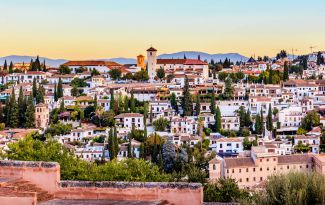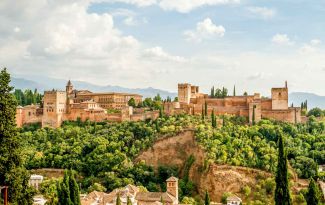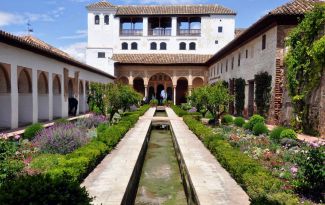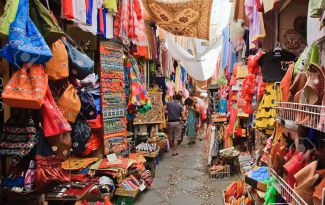Discover the wonders of a forted city surrounded by the Sierra Nevada mountain range
This city is masterpiece combining Moorish archaeology and gypsy mysticism. One of the most famous areas to hangout is the chaotic Albaycin neighbourhood with its numerous different walking trails and its narrow ascending streets. As you wander along, you will notice the white-walled houses with colourful plants hanging off the edge of balconies and contemporary 21st century graffiti. It is this cutting edge combination that makes this place unique. Why not pop into an Arab bathhouse or ‘Hammam’ as seen on street signs, for a relaxing moment of pure bliss. These baths are part of the historic evidence that Granada was strongly influenced by the Moors many a century ago. The Muslims built the baths and they believed the water there purified and cleansed them on a symbolic level. Just outside Albaycin there is also a lot to see such as the imposing Cathedral of Granada, the largest and most complete Arab bath ruins in Spain called the ‘Bañuelo’, and the oldest square in the city ‘Plaza Nueva’. It is also worth checking out the hilly Sacromonte neighbourhood in Granada dotted with gypsy caves and flamenco shows. One can enjoy a full evening program combining guitar ‘cantes’ and ‘quejíos’ accompanied by gyspy flamenco dances ‘zambras’ in the region where the dance originates.
But Granada is most typically known for the UNESCO World Heritage Site called ‘Alhambra’ or ‘Crimson Castle’, hailing its roots from the Arabic language. The walls of the edifice are reddish in colour because they are made up of sun-dried ‘tapia’ clay bricks. The Alhambra is located in a strategic position on a plateau with a view of the whole city on the banks of the river Darro, protected by Sierra Nevada mountain range. The fortress is surrounded by ramparts and is not completely straight in terms of architecture. Alhambra’s very first construction steps are said to have started in the 9th century. Documents date back to the year 889 when the castle part was said to have been added to the city, while Granada was under siege. Initially used for military purposes from the 13th century onwards, the castle became a Royal Palace for Moorish royalty and later for Christian monarchs. Additional parts were gradually added to the citadel such as the ‘Torre de de la Vela’ (watchtower), the public baths and the ‘Mezquita’ (mosque). The highlights of the Alhambra are the Nasdir Palaces, the Patio de los Arrayanes, the Patio de los Leones with its fountain in the centre, the Torre de las Damas, the Salon de los Embajadores, the Generalife and the Sala de las Dos Hermanas. In the 19th century the palace was restored after a long period of neglect. It is not for nothing that the fortress receives more than 2,5 million visitors per year!














